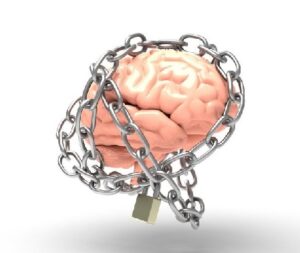Prayer Prompts to help you “Be transformed by the renewal of your mind; that you may discern what is the will of God, what is good and pleasing and perfect.” [2nd Reading: Romans 12:2]
Racism: The Other Insidious Virus
Words of Wisdom
Do and Be
Do and Be
Two unconnected but related phrases jump out here in this Gospel: “You – who do you say that I am?” And, “Jesus strictly ordered them to tell no one he was the Christ.” If we finally figure out who Jesus is but we can’t tell anyone, what’re we supposed to do with that long sought-after revelation?
I think the operative word here is “tell.” We’re not meant to tell others what or who to believe so much as to be a model that reveals more than words can say. To let our lives be a “show and tell” of mutual love and respect, of deference to each other – a “flesh and blood” model of our aim to build community, and to maintain a balance in our communal and personal lives of prayer and work, art and music and poetry. A living example of how “give and take” is part of life-long learning and nurtures our love for each other in spite of – no, because it causes us to see our own shadow side. Our modulated and friendly laughter, our expressions of gratitude with a simple phrase like “thank you – our hospitality and sharing. In other words: our gentle determination to be Christ-like AND to BE Christ to others. Our tenor of voice in our exchanges, our harmony in prayer and song, our attentive awareness to join the pace of our liturgy, our acknowledgement of Christ in the other when we pass in the hallways – all this “tells” who our Beloved model is.
mutual love and respect, of deference to each other – a “flesh and blood” model of our aim to build community, and to maintain a balance in our communal and personal lives of prayer and work, art and music and poetry. A living example of how “give and take” is part of life-long learning and nurtures our love for each other in spite of – no, because it causes us to see our own shadow side. Our modulated and friendly laughter, our expressions of gratitude with a simple phrase like “thank you – our hospitality and sharing. In other words: our gentle determination to be Christ-like AND to BE Christ to others. Our tenor of voice in our exchanges, our harmony in prayer and song, our attentive awareness to join the pace of our liturgy, our acknowledgement of Christ in the other when we pass in the hallways – all this “tells” who our Beloved model is.
And, you know what it takes to DO and BE this. That’s the answer to the question Jesus asks: “Who do YOU say that I am?” It takes close familiarity with WHO Jesus is. You’ve probably heard the expression “familiarity breeds contempt.” But the opposite is what’s true for those who seek to know Jesus – really to know anyone. Time spent in Jesus’ company – in the company of our companions – fosters intimacy, closeness and an ease in each other’s company. It’s true, too, for all who seek to build a relationship with another person or persons in community. It’s a powerful realization when we stop to think: each one of us is responsible for the community we create.
One of the many stories Monsignor Cummings (1918-2020) shared with me in his later years – I’d first met “Father George” in 1949 as a youngster at Good Counsel Camp – was also quoted at his funeral. It serves to remind all of us of what it takes to be a loyal follower, an imitator of Christ – a true servant.
When Monsignor was around 50 years a priest, (this true story goes) a young intern at Good Counsel Camp asked Father George: “When did you decide to become a priest?” Without skipping a beat, Cummings answered: “This morning.” He added as aside, “Every day I wake up and I recommit myself, to serving as a priest.”
That’s a true vocation story! Each and every day, we hear Jesus ask: “Who do you say that I am.” Whatever our response, He cautions: “Tell no one I am the Christ.” … “Rather, my friend, recommit yourself to be my instrument of peace in your community … who, in turn, together will be a living example of a “peaceable kingdom” to all who witness your way of life, and your living. “For where God has placed you, that is your pulpit.”
[TUBI movie “The Current.”]
~Reflection by Sister Roberta Bailey, OSB, Prioress
First Reading: Isaiah 22:19-23 Second Reading: Romans 17:33-36
Gospel Matthew 16:13-20
Continue ReadingHow to Combat an Amygdala Hijack
We thank Sunrise Abuse Shelter for letting us forward this interesting information to our friends and constituents.
STRESS ON YOUR BRAIN,
HOW TO COMBAT AN AMYGDALA HIJACK
So, what is an Amygdala Hijack?
It is first imperative to understand a little about two important areas of the brain related to stress; the Amygdala & the Prefrontal Cortex.
The Amygdala’s job is to analyze and detect threats for survival purposes.
The Prefrontal Cortex is referred to as the executive center of the brain i.e., intentional thinking, rational thought, planning, etc. How these parts of the brain typically function and interact under stress is fascinating and can be insightful in understanding why we or others sometimes react in ways that may seem irrational.
Simplified Overview
High Stress and Fear = Activates the Amygdala, which simultaneously impairs the Prefrontal Cortex.
The brain’s Amygdala essentially takes control focusing on survival. This is referred to as an Amygdala Hijack.
The lack of Prefrontal Cortex functioning often dramatically affects attention, behavior, and memory. No one reacts the same.
The Amygdala is a primitive part of the brain and is not nearly as evolved as other regions. Once used to detect saber tooth tigers eons ago, now in modern times, it can activate if someone rolls their eyes at us. So those are extreme circumstances but not untrue. Recognizing the difference between a real threat, a perceived threat, or a harmless insult is key. But how do we do this when the Amygdala has taken away our ability to logically think straight?
Here are some tips:
First, notice what you are experiencing throughout your body. This could be sweaty palms, tingling in the hands or feet as the body prepares to fight or flee. You may be red faced or very pale. Your eyes may be dilated. Your teeth may be clenched. There are many physiological signs, so research this to learn more. Mindfulness of your body and mind will become easier with practice. Noticing when others are in this hijacked state can also be useful as you will likely
want to steer clear of them if at all possible.
Next, try to activate the Prefrontal Cortex by taking some deep breaths, while attempting to evoke reasoning. Some people count or segregate themselves to allow time to return to a more normal state. If the threat is not real, then talk yourself through this. Reason with yourself or basically your Amygdala. For instance, “Whoa, that was scary or stressful or insulting, but I am ok and this will not matter tomorrow so just chill out and calm down. Stress is not good!”
I am by no means an expert on this subject, I just find this topic extremely interesting. I have one lots of research on this in the past and experienced many of trials and errors on overcoming my own Amygdala Hijacks.
I hope that this brief overview inspires you to acquire much more information and helps you become more mindful and patient with yourself and others as we are all going through a stressful time in our world. Be safe and be well. -SP
~Article from Sharon Perkins, Sunrise Pasco
Continue Reading









